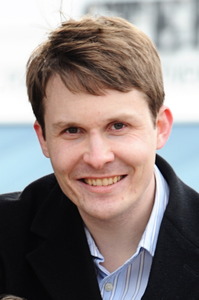One of the things I find really interesting about urban planning issues is that each city has its own unique story. I’ve mostly drawn my examples from Washington DC, St. Louis, Philadelphia, and New York because those are the cities I’ve lived in recently. But you can find similar stories in cities across the country. Here are some examples pointed out by readers.
D Magazine writer Wick Allison points to this post about the damage I-30 did in Dallas:
In 1964, when traffic engineers were even more ignorant about how cities work than they are today, the state completed I-30 by building the present elevated roadway. By that time, blacks had filled in the streets around Fair Park as Jews had moved to newer neighborhoods in North Dallas. In 1964, no black leaders had the political muscle to stop an elevated freeway from segregating their neighborhood from the rest of the city. So the freeway was built, an act of unthinking institutional racism that rammed a barrier through Dallas’ most historic neighborhoods.
The Conversation About Dallas Begins With Smart Criticism
What Henderson Avenue’s Rebirth Says About the Future of Dallas
The elevated freeway created poverty on both sides of the divide. Mansions on Munger and Second were cut up into apartments and boarding rooms. Only heroic action saved the blocks of Swiss Avenue nearest Lakewood.
Chris Monnier points to this online bibliography of sources documenting the destruction of St. Paul’s Rondo neighborhood to make room for I-94:
This predominantly African American neighborhood in St. Paul was displaced in the 1960s by freeway construction. In the 1930s, Rondo Avenue was at the heart of St. Paul’s largest Black neighborhood. African-Americans whose families had lived in Minnesota for decades and others who were just arriving from the South made up a vibrant, vital community that was in many ways independent of the white society around it. The construction of I-94 in the 1960s shattered this tight-knit community, displaced thousands of African-Americans into a racially segregated city and a discriminatory housing market, and erased a now-legendary neighborhood.
John Deever points to Boston’s Big Dig as a (very expensive) solution to the urban freeway problem. He also points to a project to add a normal city street over I-670 in Columbus:
The project (in the oval in the uppermost picture) started out, in the mind of the Ohio Highway Department as a simple widening of the I-670 as it rolls through Columbus, Ohio. But the adjoining neighborhoods put up a fight. (This is my casual from-a-distance understanding of what happened.)
The compromise proposed by some local genius was to make the new overpass (neccesitated by the wider freeway) into a city street by lining it with shops to “link rather than divide.” It is under construction now.
Here’s Monnier again:
I love that freeway cap in Columbus that is discussed in John’s link. Minneapolis sort of has a similar thing with the new Target Plaza, which covers part of I-394 and connects downtown to the new Twins baseball stadium (Target Field). I’d LOVE to see such a Columbus-style cap in Minneapolis to cover the awful I-94/I-35W trench just south of downtown. The trench separates downtown from the rest of the city, with the blocks just north and south of the trench being sort of dead and quiet despite the fact that they are within walking distance of downtown.
Finally, I want to endorse this comment from reader (and self-described “planner in the Chicago area”) pete-rock:
Lastly, it wasn’t simply and only “planners” who allowed freeways to lead to urban neighborhood distruction. In fact, it wasn’t even mostly planners. The main culprits: local politicians who wanted to have interstate highways cut through their cities so they could control patronage construction jobs. Traffic engineers whose only concern was to design roads to move cars as swiftly as possible from one side of town to the other, without regard to neighborhood impact. A real estate industry that was looking to extract value from decimated urban neighborhoods as well as farmland sites. “Planners” helped make it happen, no doubt, but they were only facilitating the wishes of the power structure.
The problem here wasn’t so much that any specific group of people hated cities. Rather, the problem is that the top-down decision-making process that produced the constructions plans failed to properly take into account the interests of those whose homes and neighborhoods were slated for destruction. The important point isn’t to apportion blame, but rather to figure out how to undo the damage, and to make sure similar mistakes aren’t made in the future.




2 Responses to Urban Freeways: Examples from Readers